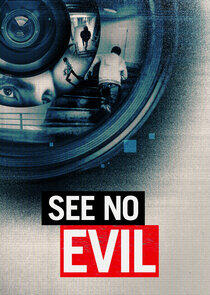Lucy Worsley Investigates - Season 1
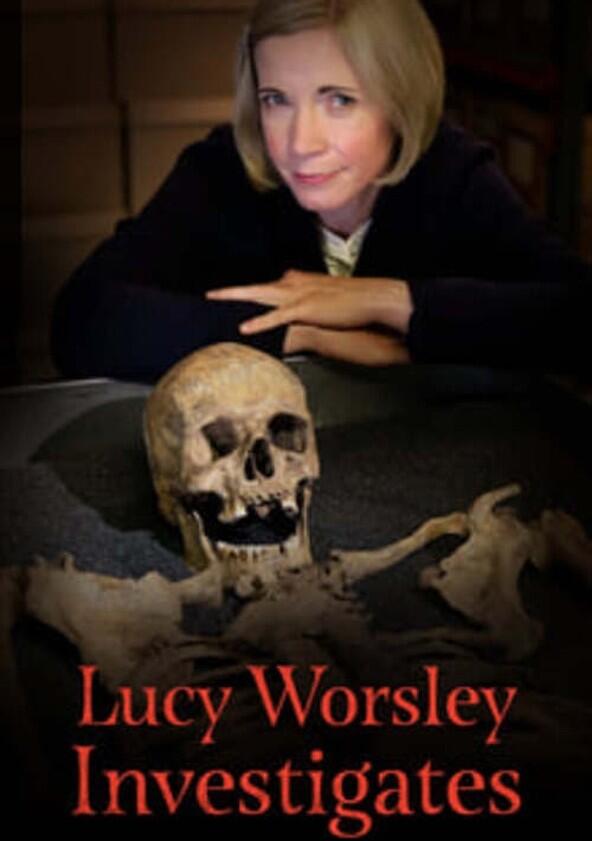
Season 1
Who killed the Princes in the tower in 1483? What actually caused the Black Death? Why did a witch craze sweep 16th-century Britain? Was George III really mad? These are some of the most enduring and perplexing questions that have baffled academics and fascinated history fans for years. In Lucy Worsley Investigates, the historian turns sleuth by reopening and completely re-evaluating these infamous mysteries. She follows the evidence, bringing a contemporary perspective to each mystery. Worsley explores how changing attitudes to gender politics, class inequality, mental health, and children can challenge our perceptions of the past and provide new answers to each mystery.

Episodes
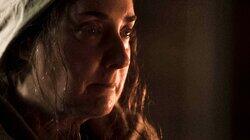
The Witch Hunts
Lucy begins her investigation in North Berwick, a seaside town near Edinburgh where the first witch hunts began. The story goes that in 1590 a coven of witches gathered here to cast a spell to try to kill the King of Scotland, James VI. Viewing an account from the time, called Newes From Scotland, and other first-hand sources, Lucy uncovers a web of political intrigue that led to a woman called Agnes Sampson, a faith healer and midwife, being investigated. Agnes is accused of witchcraft and interrogated at Holyrood Castle by King James himself, before being tortured and executed.
Agnes was caught in a perfect storm - hard-line Protestant reformers intent on making Scotland devout, a King keen to prove himself a righteous leader, and a new ideology which claimed the Devil was actively recruiting women as witches. Under torture Agnes gave the names of her supposed accomplices, some 59 other innocent people, making hers the first successful large-scale witch hunt in Scotland. Its brutal success became the model for witch trials rolled out across Scotland and England for the next 100 years.
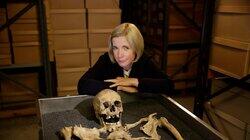
The Black Death
For centuries it was uncertain what caused the pestilence of 1348, until a vast plague pit was uncovered in Smithfield, London in the 1980s. The find revealed the bones of hundreds of victims of the 14th century pandemic.
Now stored in the basement of the Museum of London, Lucy learns how DNA extracted from the skeletons enabled scientists to finally identify a bacteria called Yersinia Pestis - a pathogen to which the mediaeval population had no immunity.
In little more than a year, almost half the population had been wiped out by the Black Death. Lucy investigates what this sudden loss of life meant for the church, landowners and for the those who survived.
Exploring the social structure of mediaeval England, made up largely of rural peasants indentured to landowners, Lucy discovers a rare and remarkable set of documents: the Court Rolls of the Suffolk village of Walsham the Willows, providing a perfect microcosm of life across the country before, during and after the pandemic.
Lucy discovers how, despite the unfolding apocalypse, rather than shaking people's belief in God, it entrenched their faith. Many went on devotional pilgrimages to sacred sites like Canterbury Cathedral.
Despite the devastation, the plague propagated a shake-up of the status quo. Workers were in short supply and could demand higher wages, shifting the balance of power. Women occupied professions and roles that were previously closed to them and acquired an independence and status that would previously have been impossible.
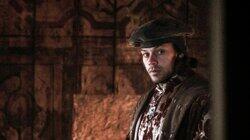
Princes in the Tower
What really happened to the Princes in the Tower? Lucy Worsley uncovers the story of the two boys whose disappearance in 1483 has led to centuries of mystery and speculation.
The story of the princes in the tower is as familiar as a fairy tale – two innocent boys murdered in their beds at the behest of their evil uncle Richard so he could seize the throne for himself and be crowned King Richard III. But there is very little evidence about what happened in 1483, and no real proof that the boys were murdered. They simply disappeared from sight – and from known historical record.
The two princes, Edward and Richard, lived during the Wars of the Roses, a decades-long fight over the English throne between the house of Lancaster and the house of York. Edward IV, the boy's father, was the first Yorkist King. His eldest son, Edward, was destined to inherit the throne – and this fact entirely shaped his young life.
Edward was just 12 when his father died and he succeeded him as King – but his age meant he wasn't considered quite ready to rule. Edward IV had appointed his brother Richard to be the young Kings protector - but not everyone was happy with this arrangement. What followed was a tussle for control between Richard and the Queen's family, the Woodvilles, revealing fascinating ideas about childhood, and the nature of politics and power in medieval England.
Uncle Richard had young Edward and Richard installed at the Tower of London 'for their own protection', but when a priest declared that the boys were actually illegitimate, Richard was next in line to the throne, and it was he who was crowned King Richard III.
As far as we know, the boys were not seen again. The gaps in the historical record have fuelled 500 years of speculation. Lucy speaks to historian Prof Tim Thornton, who has found evidence that may back up one account of what really happened to them, written by Thomas More a generation after the events.
In the light of all the evidence she's had access to, Lucy makes up her own mind about Richard's guilt. But importantly, this story has also revealed much about the lot of a royal child in medieval England. And one thing Lucy is certain about is that the story of the Princes in the Tower shows how interpretations are never fixed, there's always the possibility that new evidence will come to light, and that this story will continue to fascinate us.
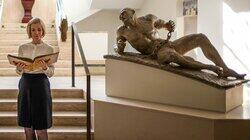
Madness of King George
How did George III's mental illness change Britain? Lucy Worsley uncovers Royal papers and explores how the assassination attempt on his life by a mentally ill subject changed psychiatry forever.
Lucy delves into the madness of King George to ask what we can learn about how attitudes toward mental health were affected by Britain having a so-called "mad" monarch. Lucy examines recently released royal papers and explores the King's profoundly tragic personal trauma: the death of two of his young children. She also explores the enormous political pressures George was under as ruler at a time of political upheaval. Revolution was brewing in France; an emperor had been murdered in Russia, and Britain was facing the imminent loss of the American colonies after nearly two centuries of British rule. Speaking with leading experts in psychiatry, it becomes clear to Lucy that all of these enormous stresses led to his bouts of mental illness, which would now have been diagnosed as bipolar disorder. She also investigates how the attempt on his life by a mentally ill woman named Margaret Nicholson affected the King and eventually led to a change in the understanding and treatment of mental illness.
Recently Updated Shows

Snapped
Who are these women and what drives them to kill? Oxygen's hit true crime series, Snapped, profiles fascinating cases of women accused of murder. Did they really do it? And if they did, why? Whether the motivation is revenge against a cheating husband, the promise of a hefty insurance payoff, or putting an end to years of abuse, the reasons are as varied as the women themselves. From socialites to secretaries, female killers share one thing in common: at some point, they all snapped. Each episode of Snapped chronicles the life of a woman who has been charged with murder. These shocking but true stories turn common assumptions about crime and criminals upside down, and prove that even the most unlikely suspects can be capable of murder.
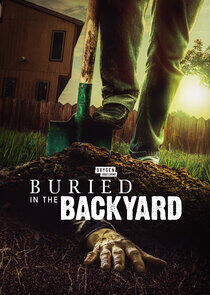
Buried in the Backyard
Buried in the Backyard examines true-crime stories of victims found buried in the most unsuspecting of places. While most people enjoy their backyard as a safe haven, others are not so lucky when they discover the horrors lurking beneath well-trimmed hedges and manicured fences. Uncovering the remains is only the beginning, however, as each hour-long episode follows a unique police investigation to identify the body, determine a cause of death and find the person responsible. Captivating recreations, along with first-hand accounts from those closest to the victims and law enforcement agents involved in the case, bring each shocking tale to life. As investigators dig into the "how" and "why" surrounding each crime, viewers are taken on an unpredictable journey and reminded that this could happen to anyone - in any home, in any neighborhood.
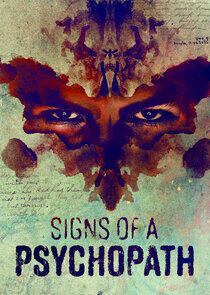
Signs of a Psychopath
For every sadistic psychopath...there were signs. Charm. Narcissism. Lack of empathy. Impulsiveness. Manipulation. Deception. These traits and others are the telltale Signs of a Psychopath. This harrowing half-hour archive series revisits some of the most brutal killers in modern history, reviewing news footage and the words of the killers themselves to see which terrifying traits each killer exhibited. What are the signs...of evil?

The Twelve
Twelve citizens are called for jury duty on a high-profile murder trial as traumatizing as it is controversial, in which a woman stands accused of killing her sister's child.
As time goes by, the murder trial becomes a trial, not only for the accused, but for the jury members themselves.
Behind the façade of their anonymity, these twelve ordinary people bring with them their own histories. Lives that are as complex as the trial, full of fractured dreams, shameful secrets, hope, fears, personal trauma and prejudice.
